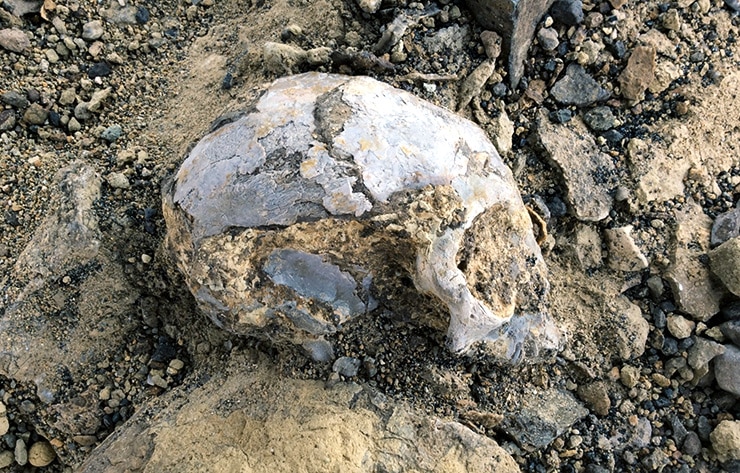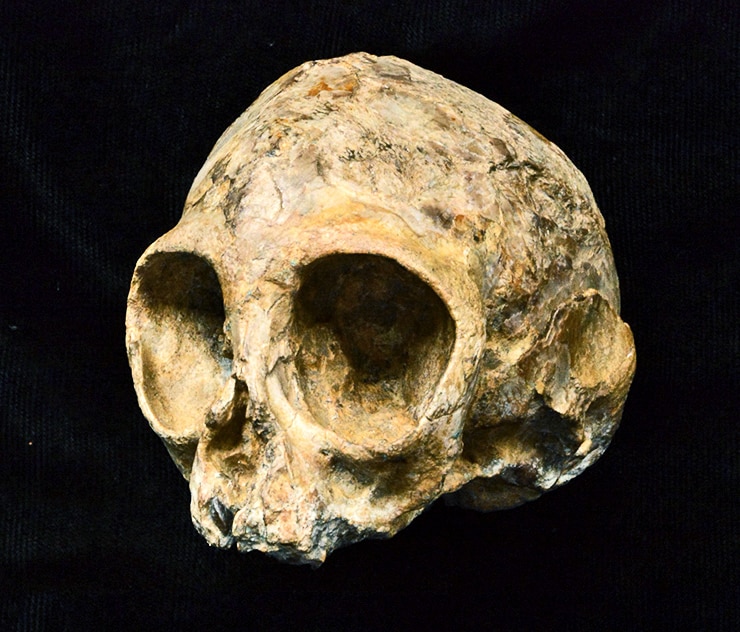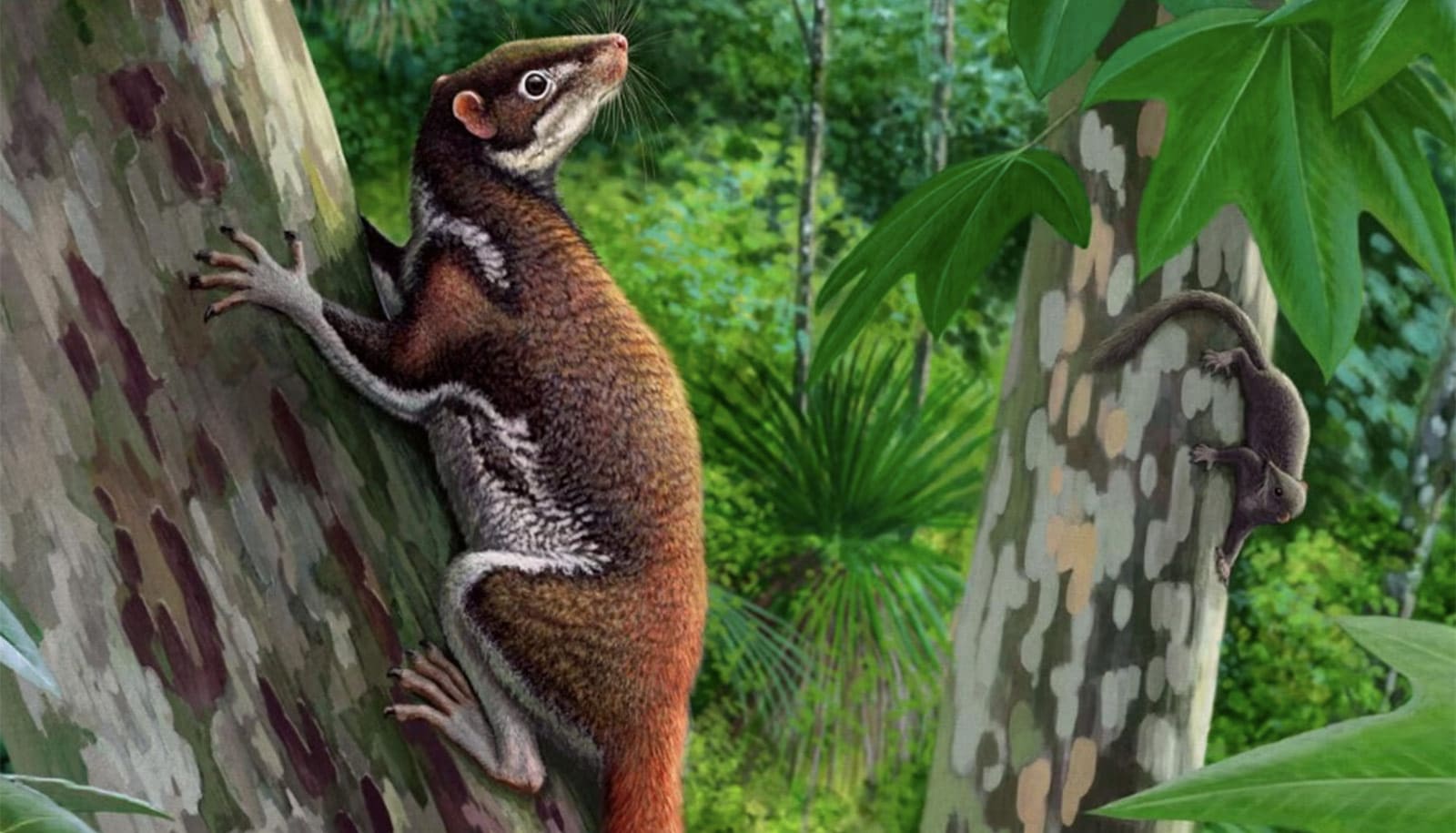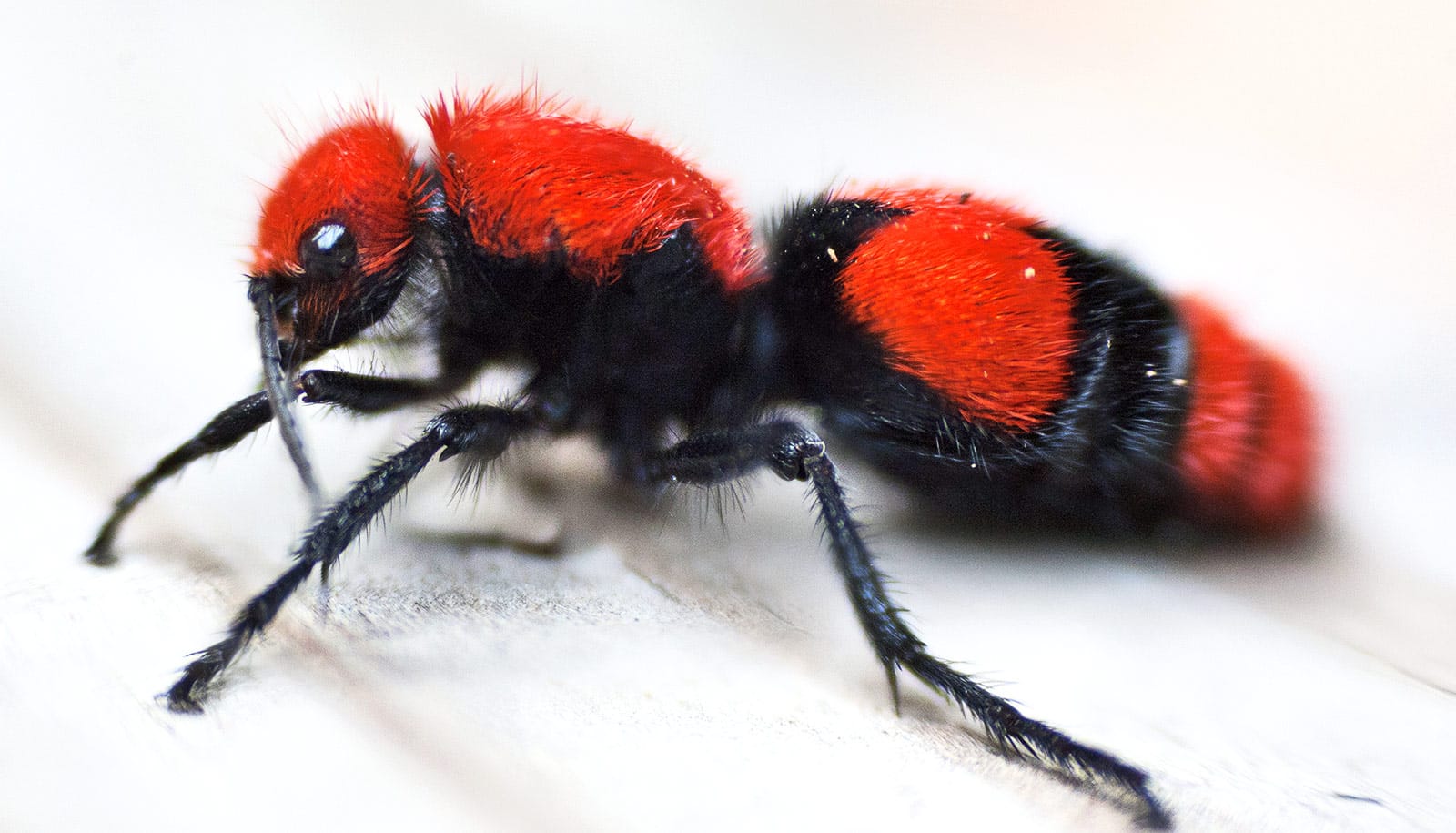Researchers have discovered a 13 million-year-old skull of a new species of ape, the most complete known fossil of its kind.
The discovery, made in Kenya, indicates what the common ancestor of all living apes and humans may have looked like.

(Credit: Isaiah Nengo/Stony Brook U.)
Among living primates, humans are most closely related to apes, including chimpanzees, gorillas, orangutans, and gibbons. Our common ancestor with chimpanzees lived in Africa 6 to 7 million years ago, and many fossil finds have suggested how humans evolved since then.
“It’s a major finding that fills a large gap in the evolutionary record.”
Little is known, however, about the evolution of the common ancestors of living apes and humans before 10 million years ago. Relevant fossils are scarce, consisting mostly of isolated teeth and partial jaw bones—making it difficult to find answers to two fundamental questions: Did the common ancestor of living apes and humans originate in Africa, and what did these early ancestors look like?
The newly discovered ape fossil, nicknamed Alesi, comes from a critical time period in the African past and may be able to answer some of those questions.
“We have a beautiful ape cranium (skull) from a period that we knew virtually nothing about, and this is one of those wonderful cases where discovery leads to all sorts of new and interesting perspectives,” says Craig Feibel, a professor of geology and anthropology at Rutgers University. “It’s a major finding that fills a large gap in the evolutionary record.”
The skull—spotted by Kenyan fossil hunter John Ekusi in 13 million-year-old rock layers in the Napudet area, west of Lake Turkana in northern Kenya in 2014—comes from an infant. It is the most complete extinct ape skull known in the fossil record.
“A nearby volcano buried the forest where the baby ape lived, preserving the fossil and countless trees,” Feibel says. “The skull came out of a layer of volcanic ash, and just below it was a lava flow of basalt that’s slightly older than the skull.”
Many of the most informative parts of the skull are preserved inside the fossil. To make them visible, researchers used a form of 3D X-ray imaging at the synchrotron facility in Grenoble, France.

“We were able to reveal the brain cavity, the inner ears, and the unerupted adult teeth with their daily record of growth lines,” says Paul Tafforeau of the European Synchrotron Radiation Facility. “The quality of our images was so good that we could establish from the teeth that the infant was about 1 year and 4 months old when it died.”
The unerupted adult teeth inside the infant ape’s skull also indicate that the specimen belonged to a new species, Nyanzapithecus alesi. The species name is taken from the Turkana word for ancestor “ales.”
Scientists create ‘virtual brains’ from tiny primate skulls
Nyanzapithecines, a long-lived and diverse group of Miocene hominoids, are likely close to the first species of hominoids. They first appear in the fossil record during the end of the Oligocene geological epoch in Africa (from about 33.9 million to 23 million years ago) and persisted until perhaps the late Miocene.
“Until now, all Nyanzapithecus species were only known from teeth and it was an open question whether or not they were even apes,” says John Fleagle of Stony Brook University.
“Importantly, the cranium has fully developed bony ear tubes, an important feature linking it with living apes,” says Ellen Miller of Wake Forest University.
Alesi’s skull is about the size of a lemon, and with its notably small snout, it looks most like a baby gibbon.
“This gives the initial impression that it is an extinct gibbon,” says Chris Gilbert of Hunter College. “However, our analyses show that this appearance is not exclusively found in gibbons, and it evolved multiple times among extinct apes, monkeys, and their relatives.”
The balance organ inside the inner ears suggests the new species was certainly not gibbon-like in the way it behaved.
“One new fossil can totally change your perspective on things…”
“Gibbons are well known for their fast and acrobatic behavior in trees,” says Fred Spoor of University College London and the Max Planck Institute of Evolutionary Anthropology, “but the inner ears of Alesi show that it would have had a much more cautious way of moving around.”
“Nyanzapithecus alesi was part of a group of primates that existed in Africa for over 10 million years,” says lead author Isaiah Nengo. “What the discovery of Alesi shows is that this group was close to the origin of living apes and humans and that this origin was African.”
“One of the fun things about this field is that it is so discovery driven,” Feibel says. “One new fossil can totally change your perspective on things, and they frequently do. More fossil prospecting at the Napudet site is well worth it since the chances of finding really exciting stuff there are very high.”
New Homo sapiens fossils are the oldest yet
The research appears in the journal Nature. The Leakey Foundation, the FoothillDe Anza Foundation, the Fulbright Scholars Program, the National Geographic Society, the European Synchrotron Radiation Facility, and the Max Planck Society funded the work.
Source: Rutgers University, Stony Brook University



